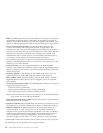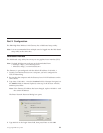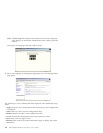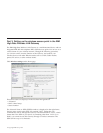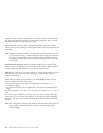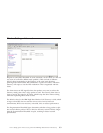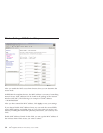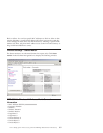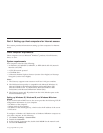Channels are the spectrum range where your wireless signals are transmitted.
The clearer the channel, the better your network performance. You can select
the desired channel from the pull-down menu.
Wired equivalency privacy (WEP) encrypts the packets sent by the wireless
Gateway. The security settings can affect performance, and must be balanced to
your needs.
Note: A higher encryption setting is more secure but will not perform as well
as a less secure setting. A 128-bit WEP encryption setting gives the most
security, but also produces the least effective data exchange Disabling
encryption gives the highest effective data exchange, but does not offer
any security.
Closed Network Function: With this function enabled, only wireless clients
with the exact same ESSID are allowed access to the Gateway. When disabled,
wireless clients with the WSSID of ’ANY are also allowed access.
WEP Key: You can create up to four WEP keys. After enabling WEP, you must
enter the same WEP key in the client computers, otherwise they will be
refused a connection.
When WEP is enabled, type the WEP key in the WEP Key 1 field. You can
type your WEP key in one of two ways:
v For 64-bit encryption, use either five alphanumeric characters or 10
hexadecimal digits.
v For 128-bit encryption, use 13 alphanumeric characters or 26 hexadecimal
digits.
The range of digits is ″0-9″ and ″A-F″. The range of characters is ″a-z, ″A-Z″,or
″0-9″.
You can also type a WEP key in the Key 2, Key 3, or Key 4 fields. WEP only
uses one key. You must select one WEP key as an active key before enabling
encryption. The keys must be defined the same on the client and the Wireless
Gateway.
Note: The configuration changes made through the Web-based setup utility are
automatically saved into the flash memory within 30 seconds after
clicking Apply.
3-2 IBM
®
High Rate Wireless LAN Gateway: User’s Guide



